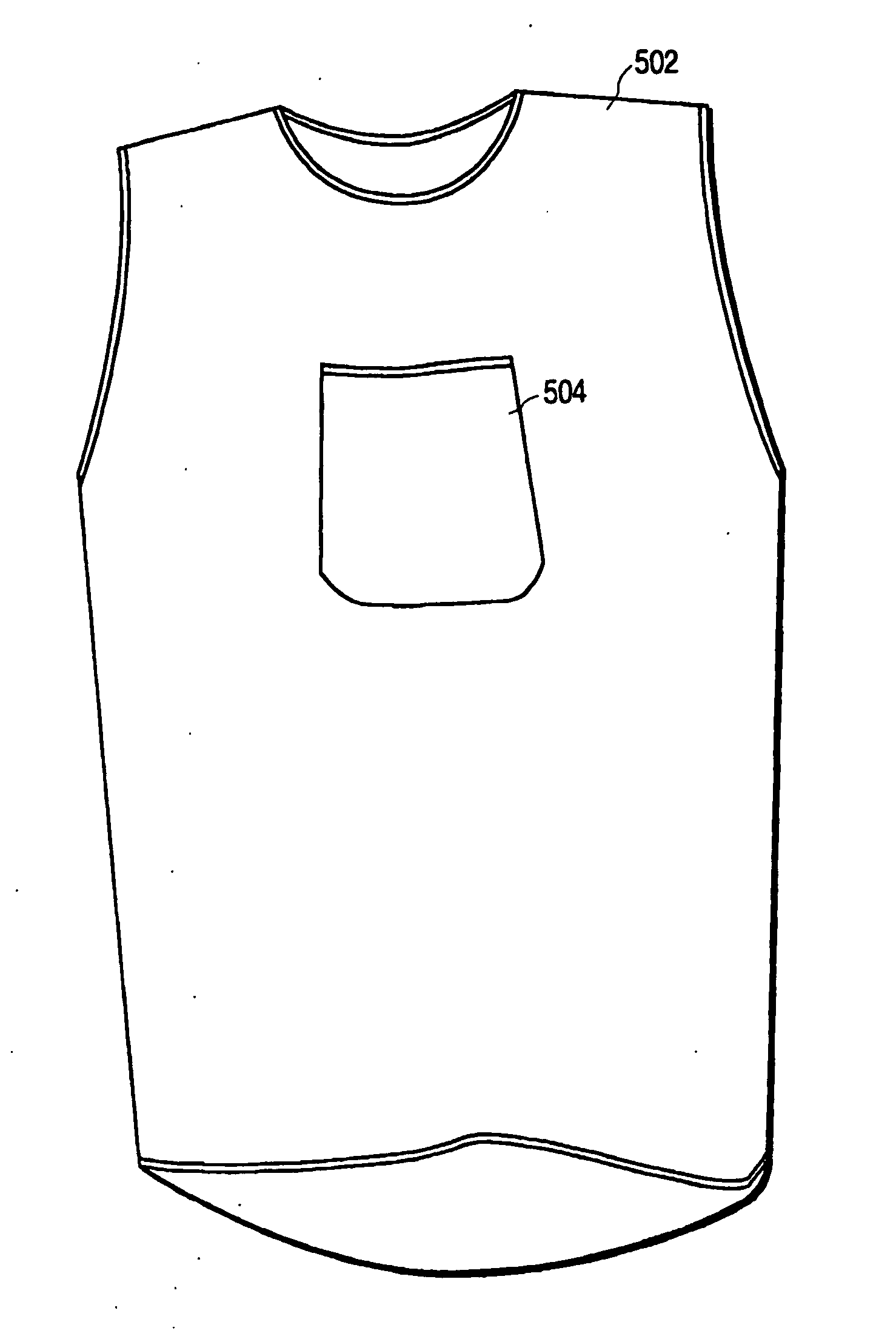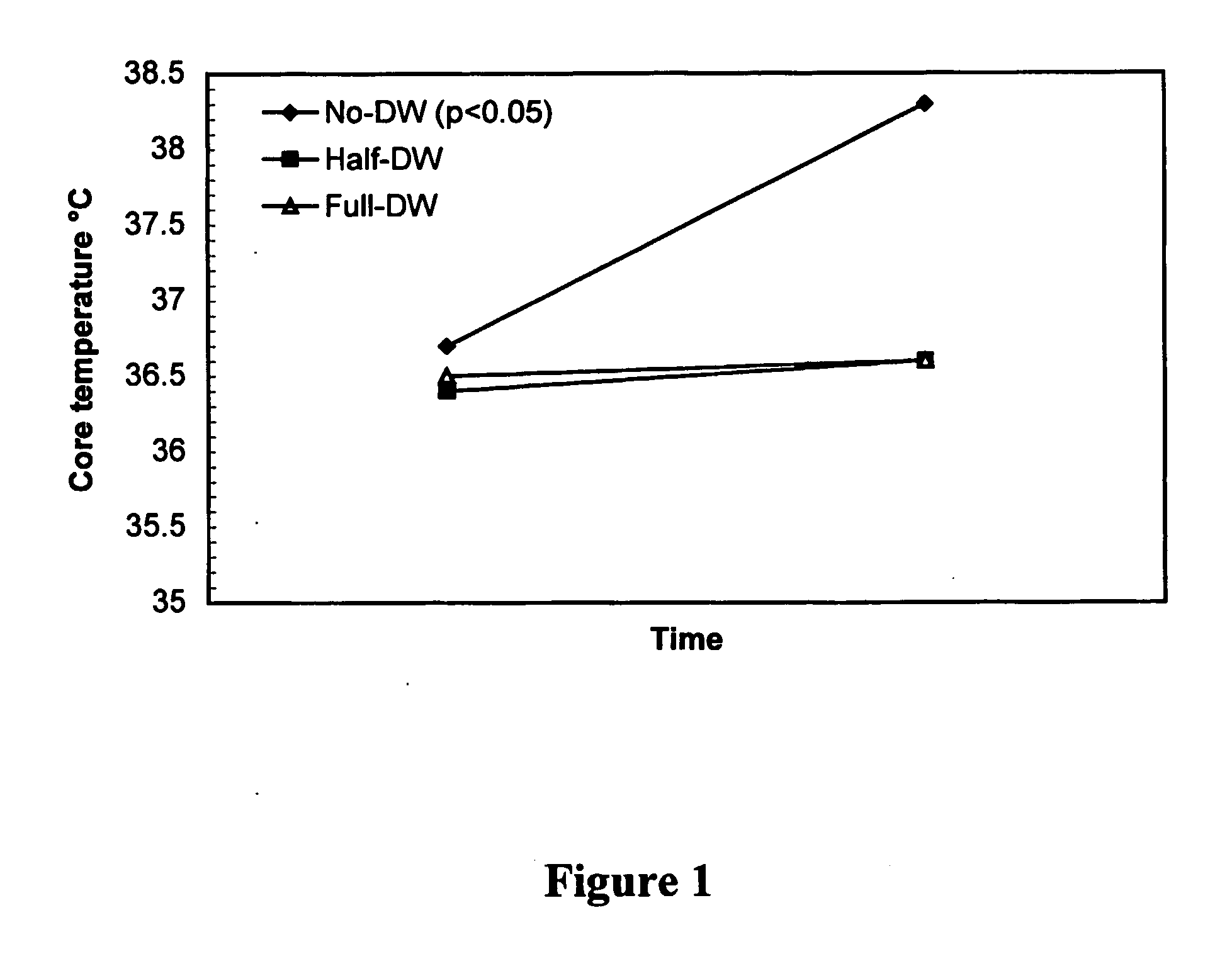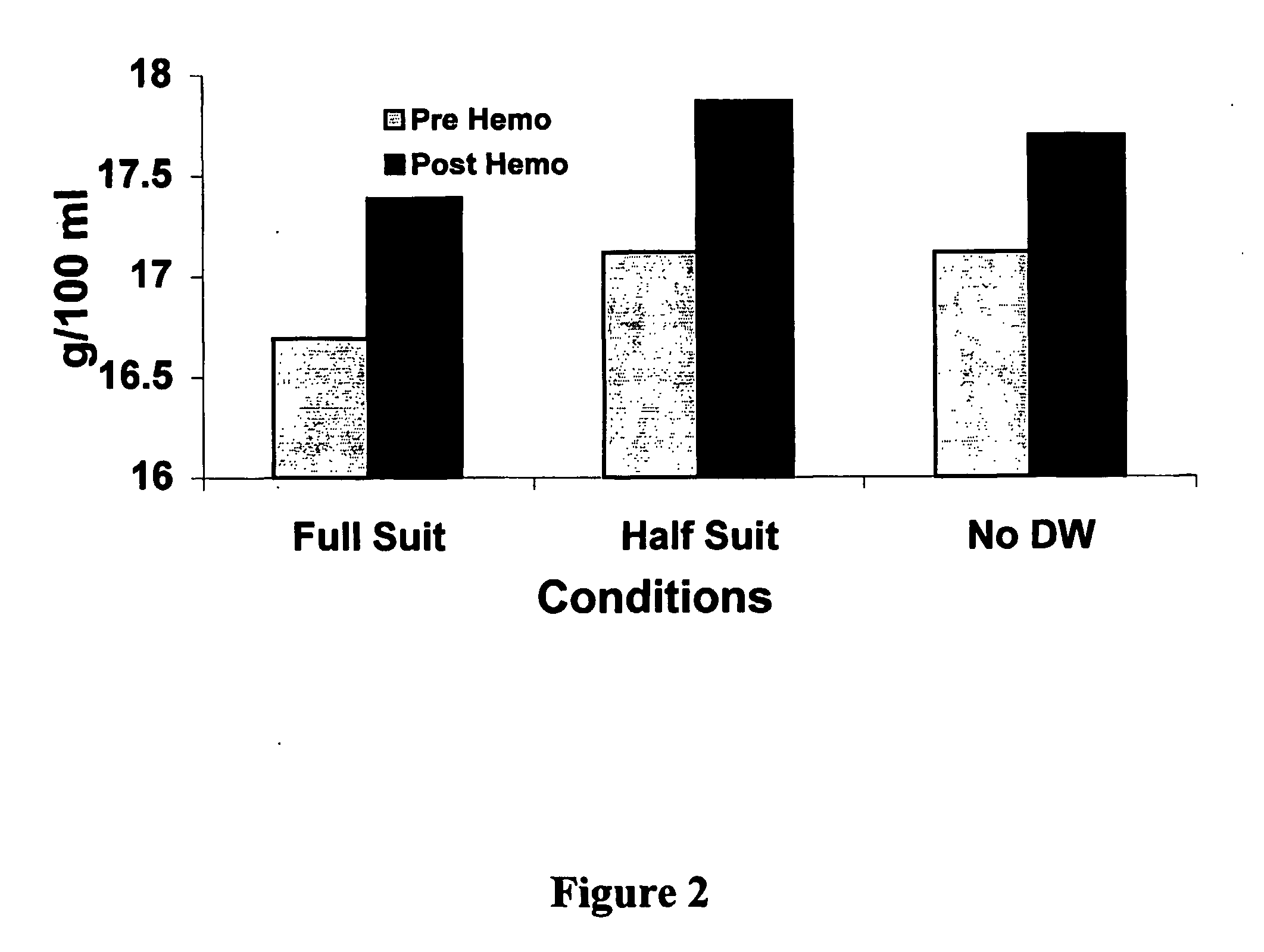The physiological requirements for
thermoregulation during exercise or high temperature
exposure are considerable and if proper measures are not in place to maintain
homeostasis, heat exposure can sometimes lead to death.
Not only does the body core increase in the heat, but also the correlating reduction in
plasma volume could lead to circulatory failure.
In addition, maximal
cardiac output and VO2max are reduced during exercise in the heat because the
reflex compensatory increase in
heart rate is insufficient to offset the
stroke volume decrease (McArdle et al., 1996).
This layering effect traps insulative air
layers around the body and impairs the transfer of heat to the environment.
The limited evaporative heat loss allowed by the protective clothing, combined with an increased
metabolic heat production and high ambient temperature, can increase the body's
core temperature to dangerously high levels.
A few hours of intense
physical exercise in a hot environment can cause water loss to reach a significant level.
The effect of exercising in the heat also causes serious decreases in
blood plasma volume.
However, neither hyperhydration nor
glycerol loading provided any thermoregulatory
advantage over the maintenance of euhydration during compensable
heat stress, even after
acclimatization took place (Latzka et al, 1997).
It was also suggested that changes in
plasma osmolarity levels from loading before exercise in the heat, rate of
fluid intake combined with core temperatures (CRTP) and
skin blood flow (SKFL) may suggest that heavy loads of
water intake during exercise may not be beneficial for thermoregulatory effectiveness during such conditions (Armstrong et al., 1997).
During exercise as
dehydration progresses thermoregulation becomes progressively more difficult, due to the fact that a large portion of water loss through sweating comes from the
blood plasma, the body's circulatory capacity is adversely affected as sweat loss progresses.
Although their findings are consistent, it seems to lack evidence on the importance of
hydration status during uncompensable
heat stress.
This extra weight from the amount of equipment causes the players to sweat more as their muscles have to work that much harder to compensate for the additional weight.
Although advances have been made in the quality of equipment that is used by such
athletes, additional weight still causes an
increased stress load on the body.
While most of today's equipment is designed to allow proper ventilation, professionals in various sports still have to contend with the increasing stresses placed on the body caused by the environment.
However,
fluid intake is only a small part that has to be played in protecting oneself against thermo-exhaustion.
As mentioned before, equipment,
fluid intake, environmental conditions and thermoregulatory properties of each individual all contribute to an
increased risk of possible thermo exhaustion.
According to Latzka et al., (1998), dehydration during
prolonged exercise in the heat is already known to exacerbate cardiovascular strain, increase core temperature and impair endurance performance compared with when fluids are ingested during exercise.
This is nothing new to
athletes in sports such as marathon running, or even triathletes.
Although
acclimatization has been proven to be an effective mechanism against environmental stresses,
athletes of some other sports cannot afford the luxury of spending several days to weeks being acclimatized.
Not only is proper fluid intake important in maintaining
homeostasis within the body, other problems that are associated with
prolonged exercise in the heat related to the development of fatigue.
In this particular study, the main finding was that fatigue during exercise in the heat was related to high internal body temperature.
As
internal temperature was increased due to different environmental conditions throughout the study, fatigue set in more quickly than in cooler environmental conditions.
Even though this particular study does shed a new light onto the effectiveness of exercising in various
body positions, it still does not eliminate the problems associated with
regular exercise or sports participation while in an upright position.
(1999), heat
acclimatization and training may result not only in an enhanced sweating rate, which may improve heat dissipation by
evaporation, but also in greater fluid losses.
 Login to View More
Login to View More 


